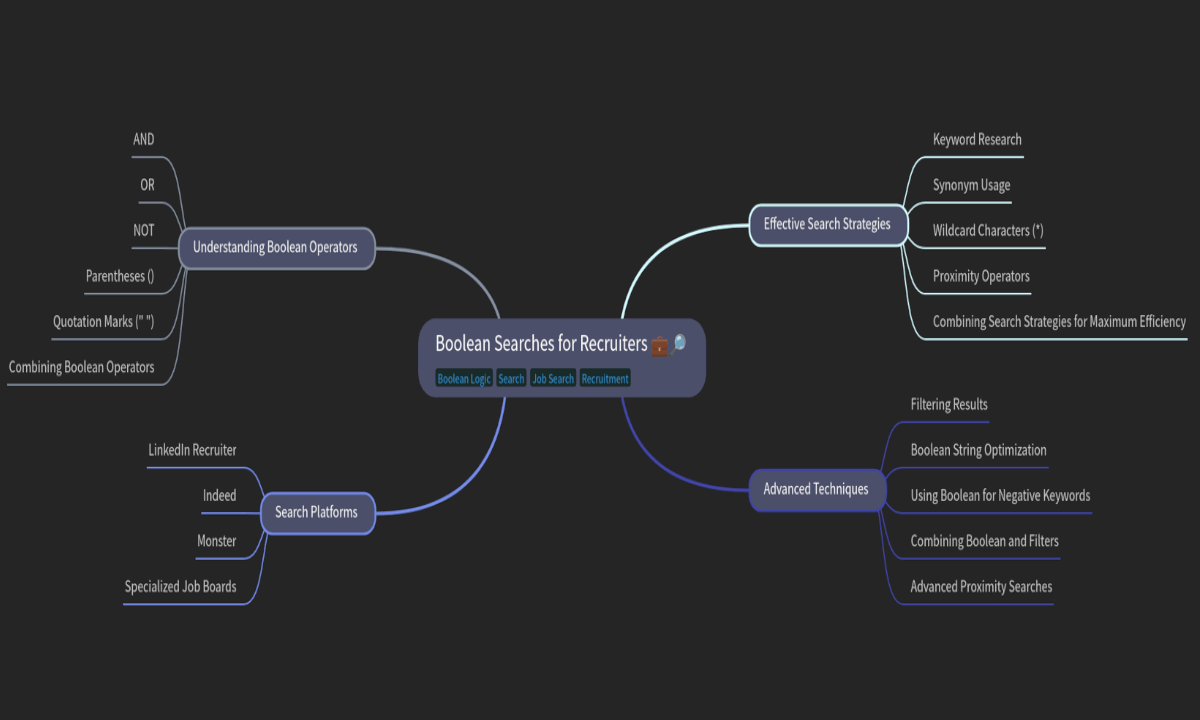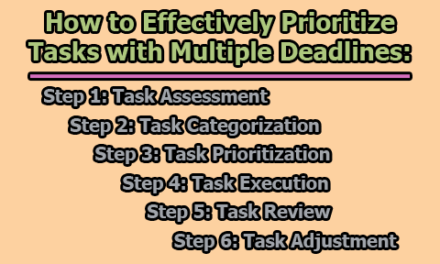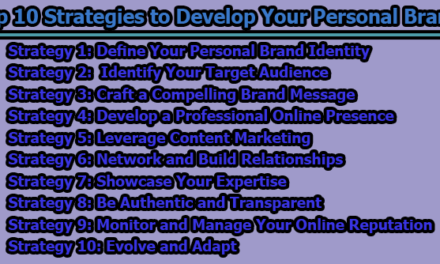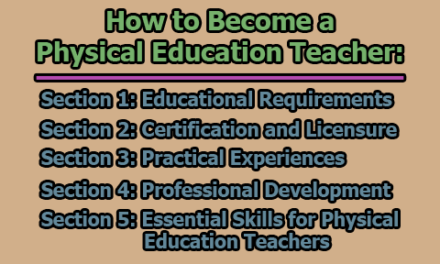Boolean Searches for Recruiters:
Finding the appropriate personnel quickly is essential in today’s competitive recruiting scenario. Recruiters often face the challenge of sifting through vast amounts of data to find candidates who meet specific job criteria. Boolean searches offer a powerful solution by allowing recruiters to create precise search strings that streamline the hiring process. This article explores the Boolean searches for recruiters; including the fundamentals of Boolean operators, effective search strategies, key recruitment platforms, and advanced techniques.
1. Understanding Boolean Operators:
Boolean operators are essential tools for recruiters conducting precise and efficient candidate searches. They streamline the recruitment process by refining search results based on specific criteria. By understanding how these operators function, recruiters can construct complex and targeted search queries that reduce time spent reviewing irrelevant profiles and improve the quality of candidates identified.
1.1 AND Operator: The AND operator narrows search results by including only those profiles that contain all specified terms. It is particularly useful when recruiters need candidates with multiple essential skills or qualifications. For example:
- Example: Java AND Python
- Result: Profiles mentioning both Java and Python will appear, filtering out candidates who have only one of these skills.
This operator is beneficial when searching for candidates with a combination of technical skills, certifications, or relevant experience.
1.2 OR Operator: The OR operator broadens search results by including profiles containing at least one of the specified terms. This operator is helpful when different keywords represent similar roles or skills.
- Example: Java OR Python
- Result: Profiles mentioning either Java or Python will appear.
Recruiters can use OR to explore a broader talent pool, especially when job titles, industry terms, or technologies have multiple common variations.
1.3 NOT Operator: The NOT operator excludes profiles containing specific terms, helping recruiters avoid irrelevant results. It is especially useful when certain skills or experiences are not desired.
- Example: Java NOT JavaScript
- Result: Profiles containing JavaScript are filtered out, ensuring the focus remains on Java-specific candidates.
This operator refines search results by eliminating candidates who might not fit the required criteria due to unrelated experience.
1.4 Parentheses (): Parentheses group terms and clarify the order of operations in complex queries. They ensure that search engines process Boolean expressions correctly.
- Example: (Java OR Python) AND Developer
- Result: Profiles of developers proficient in either Java or Python will appear.
Without parentheses, the search engine might misinterpret the intended logic, leading to less relevant results. Proper use of parentheses allows for more sophisticated search strings that accommodate multiple layers of criteria.
1.5 Quotation Marks (” “): Quotation marks are used to search for exact phrases. This is particularly useful for job titles, certifications, or skills that consist of multiple words.
- Example: “Project Manager” AND Agile
- Result: Profiles mentioning the exact phrase “Project Manager” along with Agile skills will appear.
This technique helps eliminate results where the words appear separately and are not contextually relevant.
1.6 Combining Boolean Operators: Recruiters often combine multiple Boolean operators to build comprehensive search strings:
- Example: (Java OR Python) AND (“Software Engineer” OR “Developer”) NOT “Entry Level”
- Result: Retrieves experienced software engineers or developers proficient in Java or Python, excluding entry-level candidates.
Such complex queries help recruiters fine-tune their searches, ensuring that only highly relevant profiles are returned.
Best Practices for Using Boolean Operators:
- Plan the Query: Identify must-have skills, nice-to-have qualifications, and unwanted terms.
- Use Parentheses for Clarity: Always use parentheses when combining multiple operators to ensure accurate results.
- Test and Refine: Run multiple queries with slight variations to determine which string yields the best candidates.
- Understand Platform Limitations: Different platforms (e.g., LinkedIn, Indeed) may interpret Boolean operators differently. Always consult the platform’s search guidelines.
Becoming skilled at Boolean operators allows recruiters to maximize the efficiency of their candidate searches, leading to faster and more effective talent acquisition outcomes.
2. Effective Search Strategies:
Effective search strategies are crucial for recruiters to harness the full potential of Boolean searches. By employing thoughtful techniques such as keyword research, synonym usage, wildcard characters, and proximity operators, recruiters can refine their searches to identify the most suitable candidates.
2.1 Keyword Research: Keyword research forms the foundation of any successful recruitment search strategy. Recruiters need to identify the most relevant keywords related to job titles, required skills, certifications, and industry-specific terms.
- Job Titles: Different companies may use varied titles for similar roles. For example, “Software Engineer” versus “Software Developer.”
- Skills and Certifications: Keywords such as “AWS Certified,” “Agile,” or “Full-Stack” help pinpoint candidates with specific qualifications.
- Industry Terms: Understanding common jargon and technical terms in a particular industry ensures comprehensive search coverage.
Best Practice: Regularly updating and expanding keyword lists according to industry trends enhances the relevance of search results.
2.2 Synonym Usage: Candidates may use different terms to describe similar skills or roles. Incorporating synonyms into Boolean searches broadens the search scope, ensuring that potentially suitable candidates are not overlooked.
- Example: (“Software Engineer” OR “Software Developer” OR “Programmer”)
- Result: Profiles using any of these common terms will appear.
Tip: Consider including common abbreviations, alternative spellings, and regional variations to capture a diverse talent pool.
2.3 Wildcard Characters (*): Wildcard characters are powerful tools that allow recruiters to search for variations of a root word. The asterisk (*) represents multiple characters, enabling searches for multiple word forms.
- Example: Develop*
- Result: Returns results that include Developer, Development, Developing, etc.
Advantages:
- Saves time by encompassing all related terms in a single search.
- Broadens the scope without compromising relevance.
Best Practice: Use wildcards cautiously to avoid overly broad results that may include irrelevant terms.
2.4 Proximity Operators: Proximity operators refine searches by identifying profiles where keywords appear close together. This is particularly useful when searching for related concepts or multi-word phrases.
- Example: “Project Manager” NEAR/5 Agile
- Result: Retrieves profiles where “Project Manager” and “Agile” appear within five words of each other.
Benefits:
- Ensures contextual relevance between search terms.
- Reduces the likelihood of retrieving profiles with coincidental keyword placements.
Best Practice: Adjust proximity ranges based on how closely related the keywords are in typical candidate profiles.
2.5 Combining Search Strategies for Maximum Efficiency: Recruiters can combine these strategies to construct complex and effective Boolean search strings.
- Example: (“Data Scientist” OR “Machine Learning Engineer”) AND Python AND (TensorFlow OR PyTorch) NOT “Entry Level”
- Result: Identifies experienced candidates with Python skills and familiarity with TensorFlow or PyTorch while excluding entry-level applicants.
Best Practices for Effective Search Strategies:
- Review and Update Keywords Regularly: Stay updated with evolving industry terms and technologies.
- Test and Refine Queries: Experiment with various combinations to find the most effective search strings.
- Leverage Platform-Specific Features: Different recruitment platforms may offer unique proximity operators or wildcard functionalities.
- Balance Breadth and Precision: While broad searches capture diverse profiles, precision ensures relevance. Adjust strategies depending on the role’s requirements.
By implementing these effective search strategies, recruiters can streamline their talent sourcing process, ensuring they connect with the best-suited candidates efficiently and accurately.
3. Search Platforms:
Recruiters rely on various search platforms to implement Boolean search techniques effectively. Each platform offers unique features, search functionalities, and Boolean compatibility levels. Understanding how Boolean searches interact with different recruitment platforms allows recruiters to tailor their strategies for optimal results.
3.1 LinkedIn Recruiter: LinkedIn Recruiter is one of the most widely used platforms for sourcing professional talent. It supports advanced Boolean searches, enabling recruiters to find highly qualified candidates.
- Supported Operators: AND, OR, NOT, quotation marks for exact phrases, and parentheses for grouping.
- Example: (“Software Engineer” OR “Developer”) AND Python AND “San Francisco” NOT “Entry Level”
- Result: Retrieves experienced software engineers or developers proficient in Python, located in San Francisco, excluding entry-level candidates.
Platform Tips:
- Utilize LinkedIn’s advanced filters such as industry, company size, and years of experience alongside Boolean strings.
- LinkedIn’s “Spotlight” features highlight candidates more likely to respond, increasing outreach efficiency.
3.2 Indeed: Indeed offers a large database of job seekers and supports essential Boolean functions.
- Supported Operators: AND, OR, NOT, parentheses, and quotation marks for phrase searches.
- Example: (“Project Manager” OR “Program Manager”) AND Agile NOT “Internship”
- Result: Displays profiles of project managers experienced with Agile methodologies, excluding internship positions.
Platform Tips:
- Combine Boolean searches with filters for salary estimates, location, and job type.
- Use company and title filters to narrow down results quickly.
3.3 Monster: Monster provides robust search capabilities with extensive Boolean support, ideal for recruiters looking for niche talent.
- Supported Operators: AND, OR, NOT, parentheses, and quotation marks.
- Example: (“Data Analyst” OR “Business Analyst”) AND SQL AND “Remote”
- Result: Shows profiles of data or business analysts proficient in SQL open to remote roles.
Platform Tips:
- Monster’s Power Resume Search tool allows for deep customization of search queries.
- Utilize industry and education filters to streamline results.
3.4 Specialized Job Boards: Specialized job boards cater to niche industries, offering highly targeted candidate pools. Examples include:
a) GitHub Jobs (Tech Roles): Ideal for technical positions. Boolean searches can focus on coding languages, frameworks, and project contributions.
- Example: (“Full-Stack Developer” OR “Frontend Engineer”) AND React AND Node.js NOT “Junior”
b) Behance (Creative Roles): Focuses on design and creative professionals. Boolean searches can refine portfolios by design tools or project types.
- Example: (“Graphic Designer” AND Photoshop AND Illustrator)
c) HackerRank (Developers): Focuses on coding proficiency and algorithmic problem-solving skills.
- Example: (Java OR Python) AND “Data Structures” NOT “Beginner”
Platform Tips:
- Leverage platform-specific filters, such as coding challenge scores on HackerRank or portfolio types on Behance.
- For niche roles, these platforms often yield higher-quality results than general job boards.
Comparative Overview of Search Platforms:
| Platform | Boolean Support | Best For | Key Features |
| LinkedIn Recruiter | AND, OR, NOT, () , ” “ | Professional roles, all levels | Advanced filters, InMail access |
| Indeed | AND, OR, NOT, () , ” “ | Broad talent pool, general roles | Salary & location filters |
| Monster | AND, OR, NOT, () , ” “ | Niche and specialized roles | Power Resume Search |
| GitHub Jobs | AND, OR, NOT, () , ” “ | Tech and developer roles | Project repositories, coding tags |
| Behance | AND, OR, NOT, () , ” “ | Creative and design roles | Portfolio browsing, creative tags |
| HackerRank | AND, OR, NOT, () , ” “ | Developer and technical roles | Coding test results, skill tags |
Best Practices for Using Search Platforms:
- Understand Platform-Specific Syntax: While many platforms support similar Boolean functions, some may have unique syntax rules.
- Combine Filters with Boolean Searches: Leverage built-in filters (location, experience, skills) along with Boolean strings for precision.
- Tailor Searches to Platform Strengths: Use LinkedIn for professional networking, Indeed for large-scale hiring, and specialized boards for niche roles.
- Experiment and Refine Queries: Different platforms may yield varying results for the same query. Refine search strings based on the most effective outcomes.
- Stay Updated on Platform Changes: Recruitment platforms regularly update their search algorithms and features. Keeping up-to-date ensures recruiters continue leveraging optimal strategies.
Become proficient at Boolean searches across various recruitment platforms, recruiters can enhance their sourcing strategies, reduce time-to-hire, and improve candidate quality. Each platform offers distinct advantages, and understanding their functionalities ensures the most efficient use of Boolean search techniques.
4. Advanced Techniques:
Mastering advanced Boolean search techniques allows recruiters to refine their sourcing process further, ensuring high precision in candidate selection. These techniques involve filtering results, optimizing Boolean strings, using negative keywords strategically, and combining Boolean searches with platform filters.
4.1 Filtering Results: Filtering results enhances the accuracy of search outputs by narrowing down candidate pools based on specific criteria. Most recruitment platforms offer advanced filters that work seamlessly with Boolean strings.
- Common Filters: Location, years of experience, education level, industry, language proficiency.
- Example: (“Product Manager” OR “Project Lead”) AND Agile AND “New York” NOT “Intern”
- Result: Returns profiles of product managers or project leads experienced in Agile methodologies based in New York, excluding interns.
Best Practices:
- Combine Boolean operators with date-posted filters for recent applicants.
- Use experience level filters to target mid-senior level professionals specifically.
4.2 Boolean String Optimization: Optimizing Boolean strings involves refining search queries to improve result relevance and reduce noise. This requires balancing broad and narrow searches to capture all qualified candidates without generating excessive irrelevant profiles.
- Techniques for Optimization:
- Simplify Search Queries: Eliminate redundant terms or operators.
- Test Different Combinations: Experiment with varied keyword groupings.
- Example: (Java OR Python OR “C++”) AND (“Machine Learning” OR “Artificial Intelligence”) NOT “Internship”
- Result: Provides candidates with programming skills in Java, Python, or C++ who specialize in machine learning or AI, excluding interns.
Pro Tip: Start broad and gradually add exclusions or specific terms based on initial results.
4.3 Using Boolean for Negative Keywords: Negative keywords refine search results by excluding irrelevant profiles, ensuring only the most relevant candidates appear.
- How to Use: The NOT operator excludes unwanted terms.
- Example: (“Marketing Manager” OR “Digital Strategist”) AND SEO NOT “Entry-Level” NOT “Freelance”
- Result: Shows experienced marketing professionals proficient in SEO, excluding entry-level candidates and freelancers.
Best Practices:
- Identify commonly recurring irrelevant terms and exclude them from searches.
- Use NOT cautiously; excessive exclusions might omit suitable candidates.
4.4 Combining Boolean and Filters: Combining Boolean searches with platform-specific filters can significantly enhance the precision of search results.
- Example: (“DevOps Engineer” OR “Cloud Engineer”) AND AWS AND Kubernetes NOT “Junior”
- With Filters: Apply location (e.g., Remote), experience level (5+ years), and industry (Tech) filters.
- Result: Narrows down profiles to experienced DevOps or Cloud Engineers skilled in AWS and Kubernetes open to remote roles.
Best Practices:
- Understand the hierarchy of filters on each platform. For example, LinkedIn may prioritize keyword relevance over filters unless specified.
- Adjust filters iteratively based on the initial breadth of results.
4.5 Advanced Proximity Searches: Advanced proximity operators help locate candidates by controlling how closely words must appear together in profiles.
- Example: “Data Engineer” NEAR/3 Python
- Result: Finds candidates whose profiles mention “Data Engineer” within three words of “Python,” indicating relevant contextual experience.
Usage Tip: Adjust proximity ranges depending on how strongly related the terms typically appear in job descriptions.
Best Practices for Advanced Boolean Techniques:
- Layer Queries Strategically: Start with broader queries and progressively add complexity through filters and negative keywords.
- Platform-Specific Knowledge: Understand unique platform capabilities; for example, LinkedIn’s NEAR operator differs from Indeed’s proximity search functions.
- Use Wildcards Wisely: While wildcards (*) can broaden searches, excessive use may return irrelevant results.
- Optimize Over Time: Analyze search performance and refine Boolean strings based on response rates and candidate quality.
- Document Successful Strings: Maintain a repository of effective Boolean strings for future use and adaptation.
By incorporating these advanced Boolean search techniques, recruiters can achieve highly targeted candidate searches, reducing hiring timelines and improving placement quality. These methods enable precision sourcing tailored to specific role requirements, enhancing recruitment efficiency across platforms.
It is apparent that mastering Boolean searches is vital for recruiters aiming to identify top talent efficiently. By understanding Boolean operators, implementing effective search strategies, leveraging diverse platforms, and applying advanced techniques, recruiters can streamline their hiring processes. Boolean searches not only reduce the time spent on sourcing candidates but also improve the quality of hires by providing more relevant results. Continuous practice and optimization of these techniques will enable recruiters to stay competitive and achieve successful recruitment outcomes in today’s dynamic job market.
Frequently Asked Questions (FAQs):
What is Boolean search in recruitment?
Boolean search in recruitment uses logical operators like AND, OR, NOT, and parentheses to refine and improve search results when sourcing candidates. This technique allows recruiters to combine keywords, exclude irrelevant terms, and create precise search strings.
Why is Boolean search important for recruiters?
Boolean search enables recruiters to:
- Find qualified candidates faster by narrowing down large talent pools.
- Refine search results by including or excluding specific keywords.
- Reduce irrelevant results, thus saving time during the screening process.
What are the key Boolean operators recruiters should know?
- AND: Narrows search by including results that have all specified terms.
- OR: Broadens search to include results with at least one of the terms.
- NOT: Excludes results containing specific terms.
- Parentheses (): Groups keywords and operators for complex searches.
- Quotation Marks “”: Searches for exact phrases.
- Wildcard (*) Operator: Finds variations of a root word (e.g., manag will find manager, management).
How can I optimize Boolean search strings?
- Start broad: Begin with general terms and narrow them by adding operators.
- Test and refine: Experiment with different combinations to see what yields the best results.
- Use negative keywords: Exclude irrelevant candidates using the NOT operator.
- Leverage wildcards: Capture multiple word variations without listing them all.
Which recruitment platforms support Boolean searches?
Most popular platforms like:
- LinkedIn Recruiter: Supports AND, OR, NOT, parentheses, and NEAR operators.
- Indeed: Supports basic operators like AND, OR, NOT.
- Monster: Offers comprehensive Boolean support.
- Specialized Job Boards: GitHub Jobs, Behance, and HackerRank also support Boolean syntax tailored to their industries.
How do I use Boolean search for negative keywords?
Use the NOT operator to exclude specific terms:
- Example: (“Marketing Manager” OR “Digital Strategist”) AND SEO NOT “Freelance”
- Result: Excludes freelance profiles while displaying relevant marketing candidates.
What are proximity operators, and how do they help?
- Proximity operators (like NEAR/) help find words within a certain distance of each other.
- Example: “Data Engineer” NEAR/3 Python
- Result: Returns candidates where “Data Engineer” appears within three words of “Python,” indicating contextual relevance.
How do Boolean searches differ across recruitment platforms?
While Boolean fundamentals are consistent, platforms may have:
- Different supported operators (e.g., NEAR on LinkedIn but not on Indeed).
- Varying syntax requirements (like mandatory quotation marks on some platforms).
- Unique filters that complement Boolean searches (e.g., location, experience, certifications).
Can Boolean searches be saved for future use?
Yes. Many platforms, including LinkedIn Recruiter and Monster, allow recruiters to save successful Boolean search strings. Maintaining a repository of effective strings ensures consistency and efficiency in future searches.
What common mistakes should I avoid in Boolean searches?
- Overusing NOT: Excessive exclusions may filter out suitable candidates.
- Incorrect grouping: Misusing parentheses can alter the intended search logic.
- Ignoring platform guidelines: Ensure Boolean syntax matches platform requirements.
- Too broad/narrow searches: Adjust keyword combinations to balance relevance and volume.
How do I combine Boolean searches with platform filters?
Combine complex Boolean strings with:
- Location filters for geography-specific roles.
- Experience level filters to target candidates with appropriate seniority.
- Industry and skills filters for highly specialized roles.
- Example: (“DevOps Engineer” OR “Cloud Architect”) AND AWS AND Kubernetes NOT “Junior”
- With filters: Apply remote location, 5+ years of experience, and IT industry filters for precise results.
Are there tools to help generate Boolean strings?
Yes. Tools like Recruit’em and Hiretual can assist in crafting optimized Boolean strings, especially for complex searches across multiple platforms.
References:
- Opada, F. M. M., Ibrahim, M. B. H., Irawan, A., Akbar, M. A., & Rasyid, A. (2024). Talent Acquisition Strategies: A Comprehensive Examination of Recruitment Policies for Organizational Success. Advances in Human Resource Management Research, 2(2), 63–77. https://doi.org/10.60079/ahrmr.v2i2.185
- MacFarlane, A., Russell-Rose, T., & Shokraneh, F. (2022). Search strategy formulation for systematic reviews: Issues, challenges and opportunities. Intelligent Systems with Applications, 15; 200091. https://doi.org/10.1016/j.iswa.2022.200091
- Gilch, P. M., & Sieweke, J. (2021). Recruiting digital talent: The strategic role of recruitment in organisations’ digital transformation. German Journal of Human Resource Management, 35(1), 53-82. https://doi.org/10.1177/2397002220952734
- Munir, Samavia & Zulqarnain, Muhammad. (2023). In Human Resources Exploring the Multidimensional Factors Which Influencing Employee Retention: A Comprehensive Study. 11. 1165.
- Nikolaou, I. (2014). Social Networking Web Sites in Job Search and Employee Recruitment. International Journal of Selection and Assessment, 22(2), 179-189. https://doi.org/10.1111/ijsa.12067
- Alderman, J. (2014). Boolean Logic/Boolean Searching. Beginning Library & Information Systems Strategies, 18. https://digitalcommons.unf.edu/cgi/viewcontent.cgi?article=1009&context=bliss

Library Lecturer at Nurul Amin Degree College










